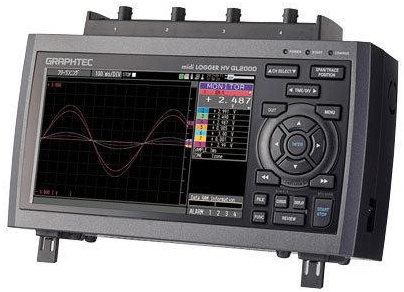A data logger, also known as a data recorder, is an electronic device that captures information over time or about the location using a built-in instrument or sensors or external equipment and sensors. They are increasing, although not, based on an electronic processor or computers as digital data loggers.
They are compact, battery-powered, portable devices that have a microprocessor, internal storage for data storage, and a sensor. Some data recorders utilise software to activate the data logger and display and analyse the gathered data, while others include a local interface device and use it as a stand-alone device.
Data loggers range from general-purpose devices for a wide variety of measurement uses to specialised devices for only one climate or application type. Although general-purpose types are programmable, many remain static devices with a limited amount or no modifiable parameters. In many applications, electronic information loggers have supplanted chart recorders.
One of the key advantages of employing loggers is the capacity to automatically gather data 24 hours a day, seven days a week. Data loggers are normally placed and left unattended for the length of the monitoring period to analyze and record information. This provides a complete and accurate image of the observed environmental parameters, such as relative humidity and air temperature.
Models of Data Loggers:
There are different types of Data Loggers in the industry. Some of them are:
Graphtec Data Logger GL7000
Graphtec Data Logger GL7000 Applications are for unmanned weather station monitoring, hydrographic capturing, humidity level recording, pressure recording, ambient conditions recording, light intensity measuring, and vibration monitoring. Data Loggers can take the data in and record sound levels utilising engineering scaling to transform data input such as 4-20mA loop and 0-10V output.
The Graphtec Data Logger gl7000 offers test and measurement instruments for a variety of physical measurement applications. It may capture real-time analysis of data to track many factors such as humidity, temperature, single and three-power phase use, RPM, Mv, Ma, CO2, torque, voltage, and pulses using patented sensors and transducers.
Graphtec Data Logger GL2000
The Graphtec Data logger GL2000 utilises applications such as control cabinet troubleshooting and recording, voltage measuring, and machine diagnostics. For CAT III, you may measure up to 600V on the input paranormal occurrences and correct RMS.
The Data Logger has four channels, each with its AD converter. This enables microsecond sampling speeds. The Graphtec Data logger GL2000 outfits with temperature sensors and humidity sensors, and all channels can capture pulse and logic. Even up to a microsecond, the designed 4GB flash storage writes straight to the RAM.
Graphtec Data Logger GL840
The GL840 Series is a 3rd gen data logger model with an excellent price/performance ratio. It has 20 analogue channels that expand to 200 channels and four distinct inputs and outputs. Its discrete inputs may be set as either logic or pulse inputs as a group.
When set to pulse, every one of the 4 channels may be set to track frequency or count. Alarms trigger several simply specified analogue and discrete input channel conditions, which represent the four discrete outputs.
The Graphtec Data Logger GL840 uses either linked to a PC or completely standalone. A regular Internet, USB drive, or extra wireless connection uses to connect to a PC. Each connection method uses a Software application to configure, collect, display, and record digitised data for direct storage to the PC’s HDD. After recording, acquired data access for examination and analysis, including the option to convert to Microsoft Excel.
Graphtec Data Logger GL240
The GL240 Voltage and Temperature probe Data Logger system have ten isolated analogue input channels, four discrete inputs, and four discrete outputs with very adjustable triggering conditions. Use the GL240 standalone with an installed battery compartment or with a computer through the USB connector.
The continuous inputs can be set as either logic or pulse inputs as a group. When set to pulse, each of the four channels may be set to check frequency or count. Alarms trigger several specified analogue and discrete input channel conditions, which represent the four discrete outputs.
Each analogue input channel programs to detect a directly connected volt ranging from 20 mV to 100 V wide scale over 12 ranges, or to check the temperature using a direct-connected temperature of any type. Each analogue input channel on the Graphtec Data Logger GL240 is electrically separated from the others and the power ground. Hence, allowing for off-ground measurements using circuits along with fueled or grounded thermocouples.
Conclusion
Data loggers are starting to deliver web pages with current readings, e-mail alarms, and FTP daily findings into databases or to users. There has lately been a shift away from proprietary goods to commercial software and toward accessible hardware and software devices.
Data loggers are evolving faster than ever before. The original stand-alone data logger concept transforms into a single device that gathers data but also has connectivity to wireless networks for event alarms, automatic data reporting, and remote control.


